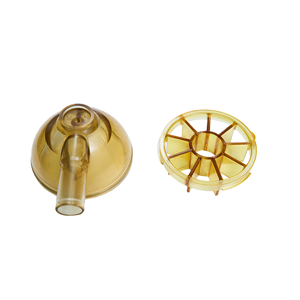Innovative Methods for High-Efficiency Plastic Parts Production
plastic parts production has become the backbone of modern manufacturing across industries. The evolution of plastic parts production enables cost-effective mass manufacturing with unprecedented precision. Current plastic parts production methods prioritize sustainability through material optimization. Automotive sectors particularly benefit from advanced plastic parts production techniques.

The global plastic parts production market continues expanding at 5.8% CAGR.
For specialized applications, low volume production of the plastic parts offers distinct advantages. low volume production of the plastic parts reduces initial tooling investments significantly. Prototyping through low volume production of the plastic parts accelerates product development cycles. Many medical device manufacturers rely on low volume production of the plastic parts for customized solutions. The flexibility of low volume production of the plastic parts supports rapid design iterations.
At industrial scale, moulding processes dominate plastic manufacturing. injection moulding produces over 60% of all plastic components worldwide. Advanced moulding techniques now achieve cycle times under 15 seconds. Multi-material moulding enables complex single-piece constructions. The moulding sector continues innovating with biodegradable polymer compatibility. Automated moulding systems have reduced labor costs by 40% since 2018.
Consumer demand drives continuous improvement in plastic products manufacturing. Today's plastic products feature enhanced durability and environmental resistance. The medical grade plastic products market will reach $8.3 billion by 2026. Smart plastic products now incorporate embedded sensors and connectivity. Recycling infrastructure for post-consumer plastic products improves annually.
Modern plastic parts factory operations leverage cutting-edge technologies. A typical plastic parts factory now utilizes IoT-enabled monitoring systems. The most efficient plastic parts factory layouts minimize material handling distances. Many plastic parts factory facilities achieve 99.8% production yield through quality systems. Regional plastic parts factory clusters create synergistic supply networks.
Injection Molding Advancements
plastic parts production via injection molding achieves ±0.05mm tolerances routinely. Modern moulding machines feature AI-driven process optimization. The latest moulding technologies reduce energy consumption by 25%. Many plastic products now incorporate in-mold electronics during forming. Automated plastic parts factory systems handle 90% of post-molding operations.
3D Printing Innovations
low volume production of the plastic parts benefits from industrial-grade 3D printing. New moulding-compatible photopolymers accelerate bridge tooling. Hybrid plastic parts production combines additive and subtractive methods. Some plastic products manufacturers achieve 85% material utilization via additive processes. Leading plastic parts factory operations now offer digital inventory solutions.
Thermoforming Efficiency
High-speed moulding for thin-walled plastic products achieves 3-second cycles. Advanced plastic parts production lines incorporate inline quality scanning. Many plastic products manufacturers use recycled PET sheets successfully. Automated plastic parts factory systems stack 1,200 units/hour consistently.
Material Science Breakthroughs
Next-gen moulding compounds enable metal-like strength in plastic products. Bio-based plastic parts production now achieves commercial viability. The plastic parts factory of tomorrow will process self-healing polymers. Many plastic products now meet FDA food contact standards cost-effectively.
Sustainability Initiatives
Closed-loop plastic parts production systems minimize waste substantially. Modern moulding machines recover 98% of process heat energy. Many plastic products manufacturers achieve zero-landfill status. The plastic parts factory concept now includes solar-powered facilities.
Economic Impacts
Automated plastic parts production reduces labor costs by 55%. Strategic moulding process optimization decreases energy use by 30%. Localized plastic products manufacturing shortens supply chains. The average plastic parts factory ROI period now stands at 3.2 years.
Future Outlook
Industry 4.0 will transform plastic parts production completely. AI-optimized moulding parameters will become standard practice. Nano-enhanced plastic products will enable new applications. The plastic parts factory of 2030 will feature fully autonomous operation.

